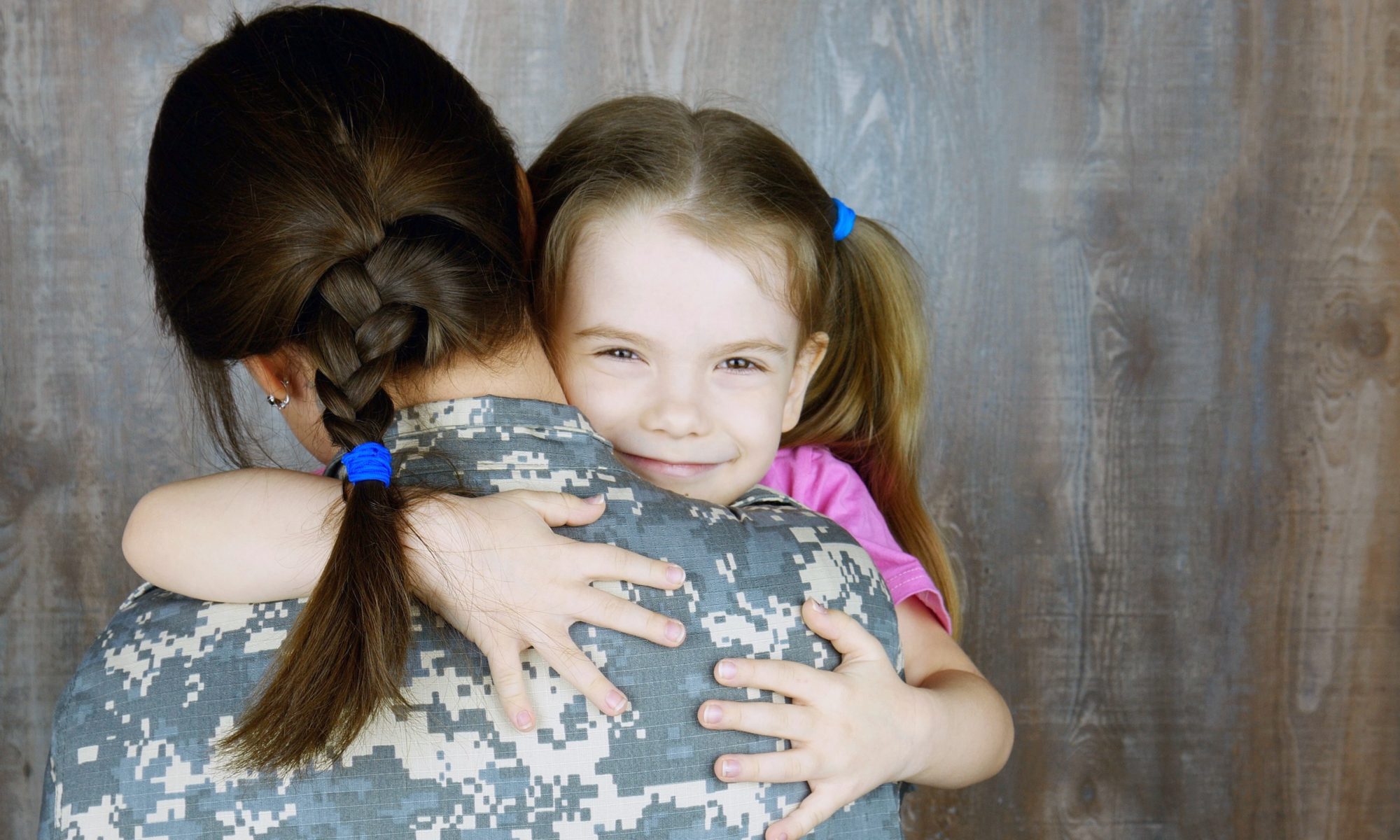Military life is challenging yet rewarding. The same can be said for coparenting.
Since 2001, two million American children have experienced a parental deployment. At least half of these children also experience a separation between their parents.
This is why coparenting in military families is so important. Separated parents must come together and make sure their kids receive full support. Yet coparents often experience many hurdles as they raise their kids.
Understanding what those hurdles are is the first step toward overcoming them. Here is your guide to the challenges of coparenting in a military family.
Separation Proceedings
Divorce is difficult enough for anyone. It is especially difficult for active-duty personnel because of the lack of communication they have with their spouse.
If you are on active-duty, understand your rights under the Servicemembers Civil Relief Act. You can obtain a postponement of legal proceedings if your service affects your ability to engage with the divorce case. When you request this protection, you can automatically receive a 90-day stay.
If you are a military spouse requesting a divorce, you should still file for a divorce as soon as possible. Keep in mind that it may take time for your partner to respond.
Both parties should talk to a lawyer who specializes in working with military families. Some law firms offer services for “military divorce.” These services do not differ substantially from civilian divorce, but the term can indicate experience with military members.
Some military bases have legal assistance attorneys. They can write letters and review legal documents for active-duty personnel.
But they cannot represent personnel in a divorce hearing. The personnel must find a different attorney.
The person who is initiating the divorce should file in the state where they live. A service member who has been living in a state for six months can file for a divorce in that state.
A military spouse can continue to receive military benefits while the divorce case is ongoing. The two parties can communicate with each other.
Both parties should also remain in contact with their children. Even an amicable divorce can be stressful for kids.
Affirm that you love them and will spend time with them. Give them books that explain divorce at their level.
Custody Arrangements
There are several ways you can consider custody in a military family. Many couples decide on joint custody, even while one parent remains on active duty. In these arrangements, the civilian parent watches over the children while the servicemember is working.
If both parents are on active duty, they must decide together where their children will live. They can live with a relative or a guardian that both parents decide upon.
There are several modes of joint custody, including legal custody. The children can spend more time with one coparent. But both can possess the same amount of legal rights. Make sure to look through all of your options before deciding on the best form for you.
Some spouses decide on sole custody for the civilian parent. The military parent does not have a say in major decisions for their children.
But they do have visitation rights. Both parties should negotiate on when the military parent can visit and how much contact they should have.
They should also decide on child support. It is up to the coparents to decide on how the military parent should pay.
A child can live with their parent on a military base. This is not ideal for a separated couple, but it is possible if necessary.
The military parent should have a way of sending the money on time and in full. They can wire the money electronically or they can send a physical check.
If the servicemember has full custody, they should designate other family members to take care of their children. They should also provide visitation access for the other coparent.
Drafting Parenting Plans
Coparenting is possible with a military family. But both coparents need to help draft a nuanced parenting plan.
The biggest factor is communication. A coparent may be deployed to an area without easy communication. You need to consider how the parent can remain in contact with their child.
Some organizations offer letter-writing programs for soldiers. If you or your child is not acquainted with letter writing, start practicing.
A plan should cover travel arrangements. A service member can receive an assignment to another duty station with little notice. They could also be sent back home.
The plan can ask both parents to set aside money so the member can return home. It can spell out how the military parent will transport themselves.
What happens when the military parent returns should be defined. They should know where they are going to live and how they can see their children.
You should also consider how grandparents and other family members are involved. You should loop them in on the plan you are forming. If you need them to watch over the children or provide support, you should specify that.
It may take some time to hash out the details. Don’t rush things. Talk things over carefully with the other party.
Creating and Revising a Family Care Plan
A Family Care Plan is separate from a parenting plan. It is a document that all service members who have children must file. It is designed for caretakers who do not have a military background but will take care of the children.
You should have a caregiver in mind when drafting one. You must name them and provide their contact information. If the caregiver is not the child’s other parent, you should describe the other parent.
Detail the arrangements they should make for daily activities. This includes how the caregiver should pick your children up from school. You can also describe extracurricular events.
In addition to logistics and monetary arrangements, you should provide medical arrangements. Include copies of your children’s medical records and insurance forms. You can discuss religious arrangements if they are important.
It is important to keep your plan up to date. As your children grow up and their arrangements change, you should edit your plan. You can change caregivers if you need to.
After a separation, you should absolutely update your plan to reflect your new arrangements. You should include information about what your custody, visitation, and child support rights are.
If your children are old enough, you can consult with them on your plan. Talk with them about what arrangements they want.
A Family Care Plan is distinct from a last will and testament. Service members are not required to draft one, but the military strongly advises it.
Coping
People struggle with a range of emotions after going through a separation. Some people experience grief as if someone close to them died. Others feel a sense of relief or excitement.
Take all the time you need to process your emotions. Spending time with your children can help, especially after the separation process is over.
But give time for yourself and your friends as well. You are in no rush to get over the feelings you are experiencing.
If your feelings impair your ability to work or take care of yourself, seek help. Servicemembers can request non-medical counseling. They can talk to an experienced counselor about coping strategies and the next steps.
Do not ask for reassignment or deployment so you can take your mind off your separation. You should try to keep working, but don’t make sudden changes to your life. This may make you feel worse.
When coparenting, the two exes often remain in contact with each other. This can be awkward. When one person is overseas, communications can be indirect or delayed.
When you talk to your ex, be as respectful as possible. Keep the conversation short and then move on with your day.
Try not to dwell on negative emotions. Do not get into an argument with them.
Separation can cause symptoms of post-traumatic stress disorder to flare up. Talk to a psychiatrist if you have ongoing PTSD. You can take medications or adopt therapies that can help you manage your symptoms.
Doing Things With Your Kids
Spending time with your kids after a separation can be difficult. They may want to talk about the absent coparent.
Explain the absence in brief terms. Be honest but don’t be too specific. Make sure your kids know how much you love them and tell them you will not abandon them.
Many children are curious about their parent’s military service. This may be difficult for you to talk about.
Keep things light. Talk about funny things that happened during your service. Tell a few short stories instead of long dramatic ones.
Let your coparent talk about their service. Don’t make guesses as to what they did or didn’t do.
Make an adventure out of your time with your kids. Go to an amusement park or a nature preserve. Visit the aquarium and eat at their favorite pizzeria.
You can have your child visit you on a military base. Create an experience that they will remember.
Make the time you have with them about them. Give them an experience they will remember positively. Project as much positive emotion as you can.
Try to keep whatever else you are feeling to yourself. Go to a friend, coworker, or medical professional if you have strong feelings of anxiety or guilt.
Finding New Partners
You do not have to pursue another relationship until you are ready. It is best to calm down and put some distance between yourself and the separation.
Many people find a new relationship after separating from an old one. You can continue to coparent while living with another partner.
Maintain boundaries amongst yourself, your new partner, your ex, and your children. You should discuss your new relationship with your ex. Address concerns that they might have and discuss how involved your partner should be in parenting.
Your ex may not be happy with your partner. Limit contact between the two of them. If your relationship gets serious, do stand your ground, but avoid making things difficult at first.
Talk to your children before you introduce them to your partner. Allow them to adapt to the new situation through time. Inform your partner about what your child is feeling.
Consider how much of a coparenting role you want your new partner to have. In particular, consider if you would like your partner to discipline your child. Have a conversation about how you and they discipline children.
If your partner isn’t willing to step into a parenting role, you can still maintain your relationship. Wait to introduce them to your children.
Your partner may or may not be a service member. It can be difficult to maintain a relationship while both partners are on duty. Do your best to facilitate your relationship with them.
Your children can engage with you, your new partner, and their other biological parent. Tell your child that they can spend time with all three of you. If they don’t want to spend time with one person, tell them that they don’t have to.
Coparenting in Military Families
Coparenting in a military family is possible. Affirm your child while you are undergoing a separation. Remain in contact with them as much as possible.
Set up custody arrangements and parenting plans. Provide specific details on how your child will be cared for.
Take the time you need to cope with your separation. Touch base with your child and spend time with them. Be careful introducing your new partner to them.
Coparenting is a marathon, not a sprint. 2Houses provides the facts you need. Read this guide on being a great coparent while having feelings for your ex.


